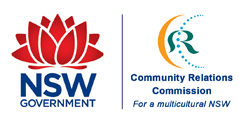Above: Port Macquarie Glasshouse
A partnership between Port Macquarie-Hastings Council and the Powerhouse Museum’s NSW Migration Heritage Centre.
Research for the project will concentrate on the three river valleys of the Macleay, Hastings and Manning Rivers. Towns in the study area include Port Macquarie, Taree, Kempsey, South West Rocks, Wingham, Wauchope & Laurieton.
This project will be run in conjunction with the Mid North Coast Chapter of Museums Australia and has invited participation from neighbouring Local Government Areas of Greater Taree City Council & Kempsey Shire Council.
The Project
Stage One of the project will commission a community history to research and uncover the hidden story of all the waves of migration and settlement to the mid north coast with a particular interest in labour and family history. The history will research from first European settlement to the present. It will encompass Anglo-Celtic migrations (with reference to particular diaspora) and contact history with Aboriginal Australians, including the shared labour histories on farms and in local industries.
The history will record the distinctive histories and ethnic profiles of towns including Port Macquarie, Taree, Kempsey, South West Rocks, Wingham, Wauchope & Laurieton over time.
Known chapters in the history include the forced migration of convicts to Port Macquarie in 1821, as a place of secondary punishment, free settlers over time, the Post-Second World War wave, the demise of the White Australia policy and subsequent waves with the 1975 multicultural immigration policy to contemporary migrations of the 21st century including the ‘seachange’ phenomenon.
The project will also record the associated dislocation of the traditional owners of the region and the histories of Aboriginal labour which are likely to be hidden histories alongside that of migrant communities. The Aboriginal history will be written separately through a second commissioned history (a second history brief will be prepared by the Port Macquarie-Hastings Council with the NSW Migration Heritage Centre). The two histories will be combined by the Migration and Settlement historian in close collaboration with the historian of Aboriginal history.
Stage One will run from April 2011 – December 2011. This scholarly research and resulting history will inform the work of local community museums and contextualise the collections and associated memories of the people who have made their homes in this part of regional NSW.
Stage Two is planned for 2012 -2013, where a person will be employed to work with the volunteer staff of local museums and historical societies to research their collections. They will document significant objects with statements of significance. This stage will build local relationships and networks to identify historically significant private collections. It will also identify local people with memories and stories who know about the collections. This stage of the project will document collections ahead of a distributed exhibition in local museums in Stage 3.
Stage Three is planned for 2013 – 2014, and it will be for the production of a web exhibition on the NSW Migration Heritage Centre website, distributed exhibitions in local museums, and an associated high quality publication.


